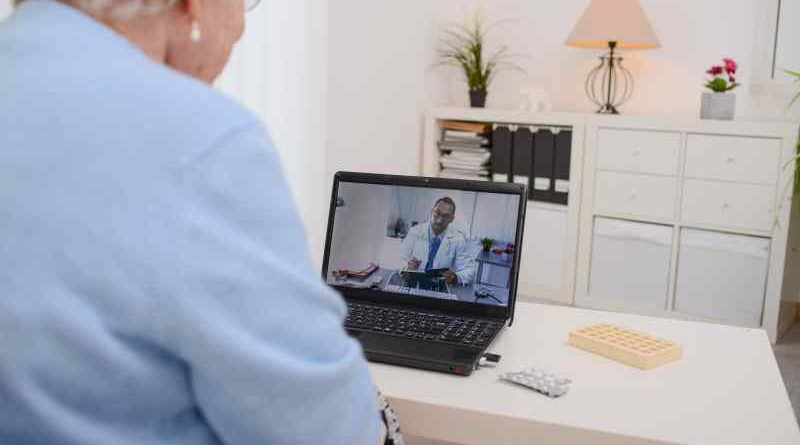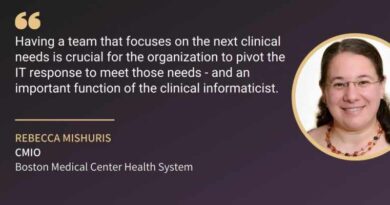Virtual care, Telehealth and Envisioning Tomorrow
By Aditi U. Joshi MD, MSc, Medical Director, JeffConnect, Assistant Professor, Thomas Jefferson University Hospital

Virtual care, or being able to affect healthcare from a distance and access patients and doctors from all different corners of the world, has existed in some form for decades. However, it has grown incredibly in the last few years and we are in an exciting time for imagining how to harness this care modality to its fullest extent. While I’ve worked in telehealth since 2013 – less than a decade – the beginning of the new decade is a good time to evaluate what we have learned and what we hope for the future.
Why Telehealth?
Our clinical needs are changing drastically. We have a larger amount of healthcare needs due to an aging population, an increase in chronic disease with the added burden of closing hospitals and increased ER populations. How to better take care of our patients, all while working with less resources, seems an insurmountable problem. Healthcare has traditionally been structured around the providers and buildings; patients have to come to us for their care. However, most of our health happens mostly outside these small slivers of time leading to only understanding a small part of an individual and population’s health.
We required finding a vendor relationship that believes in the same iterative process and could make changes along with us.
At the same time, technology has changed our lives tremendously in the last decade and we have become more reliant upon it. It’s used in almost every aspect of our lives and we have to try to leverage the already available solutions for better patient care. Telehealth, as a prime example, can increase access, decrease costs, improve effectiveness and experience. These goals, the tenets of the NQF Framework for telehealth, determine how best to create programs and implement telehealth for its various use cases.
For example, in provider to provider telehealth which is practiced between providers allowing rural or resource poor areas to see a specialist, the consultant can do a video consult, evaluate the workup and aid in creating a plan of action. This can mean transfer to a higher level of care or keeping the patient in their local hospital for treatment there. This increases access to specialists where most needed, improves effectiveness of care since patients can be kept in their home hospital or evaluated for transfer. It decreases costs if can keep patients at home and reduce unnecessary treatments. It can improve satisfaction for all of the above reasons. All programs can be evaluated in this manner to be most effective.
Jefferson Health and Telehealth
At Thomas Jefferson University, we wanted to create an all-encompassing digital home for patients which meant creating a broad-based program that included remote consults to rural areas, provider to provider specialist consults, programs within the hospital, and acute care direct to consumer telehealth. It takes time, resources, staffing and a thoughtful rollout to be successful. Our process included thinking through every part of a patient’s healthcare journey and creating programs to intervene at every part. Outlining each of these programs is outside the scope of this article, however, I want to stress the startup mentality at a large academic center that gives us our success – we work quickly and iterate often. We required finding a vendor relationship that believes in the same process and can update and change with us. We try new things often, fail or succeed fast, and try again. This is a unique asset within the world of academic medicine in this rapidly changing tech world.
With that same mentality, since our infrastructure was created it has been much easier to leverage telehealth or other digital programs for other use cases. We are setup for scheduled visits at most outpatient practices and run a 24/7 direct to consumer acute care program. When the current coronavirus spread made the news cycle, we were able, within a week, to establish protocols for outpatient practices, urgent care, or at home for screening and testing/transfer. This is the most interesting part of being part of a robust program and faculty – being able to leverage it for other needs quickly. At the time this article was written, there hasn’t been a case in PA and even if it doesn’t spread here, we are prepared for other future eventualities.
Future goals
Telehealth is poised to be just another modality to see providers and eventually getting rid of the tele- prefix and being healthcare. Improved communications, networks and devices will allow closer and better contact and more access to patient data. Other parts of healthcare, such as machine learning, genomics, sensors and the resulting data gathering will give us better treatment plans that can be coordinated from anywhere. Healthcare workers will have more time for other parts of care that we can daydream about but is likely something we won’t really understand until we have it established. More pressing is ensuring that whatever we create remains equitable as any new technologies are always in danger of being inaccessible to some populations. To that end, the future of medicine requires unlikely bedfellows to work together to ensure future health care is equitable, accessible and effective.



